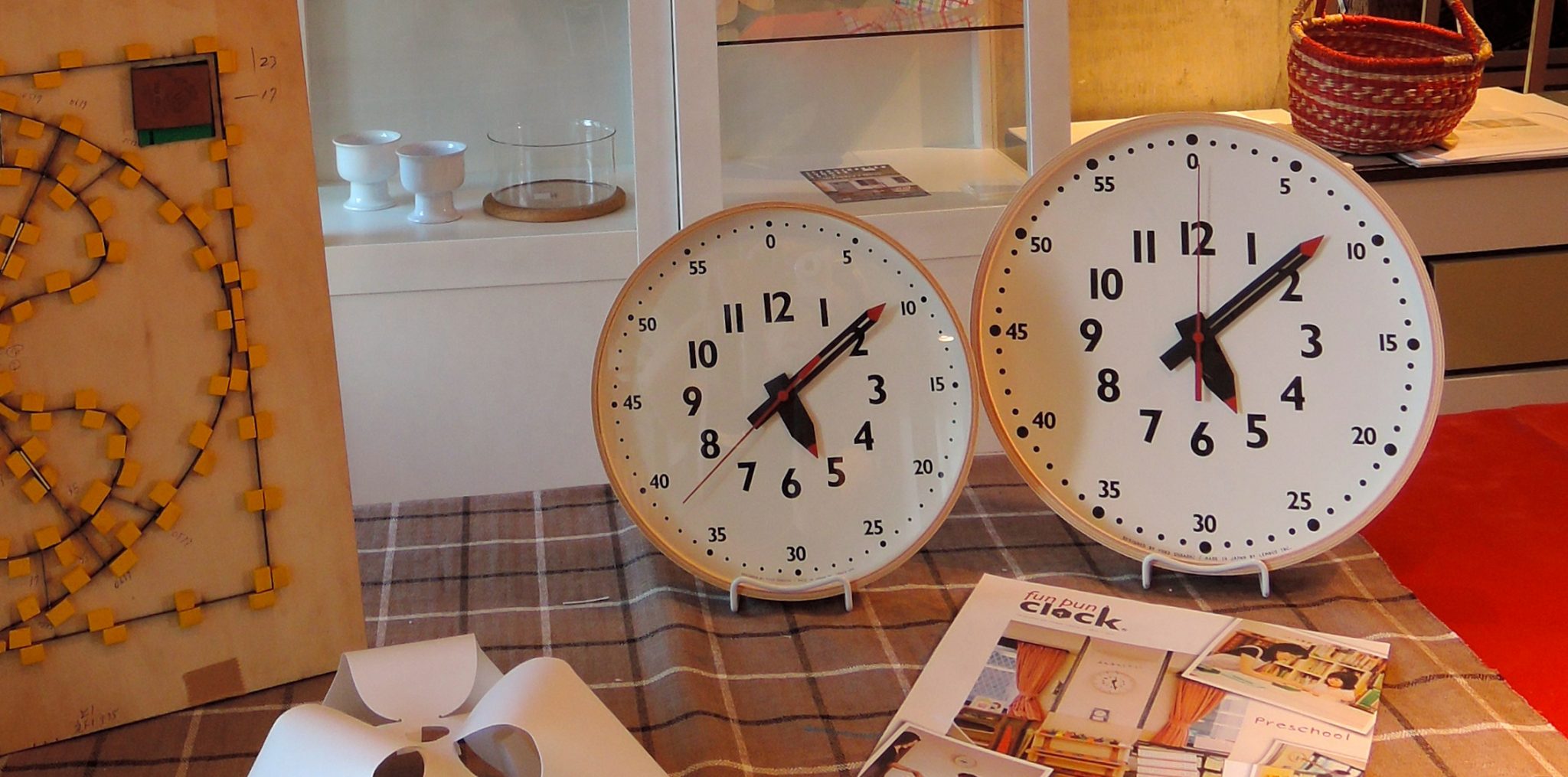
[ Design & Sentences : Yoko Dobashi ]
An analog clock that motivates children who cannot read a clock to tell the time – our “fun pun clock.”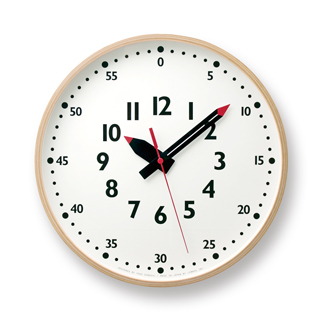
This clock, with a design based on the Montessori Method and the addition of a slightly humorous name, went through various episodes in its commodification process. Why on earth would a mother who is busy rearing her children decide to release a clock by TAKATA Lemnos Inc.?!
Let me introduce my exciting (?!) story for developing a new clock.
Days spent looking for an ideal clock
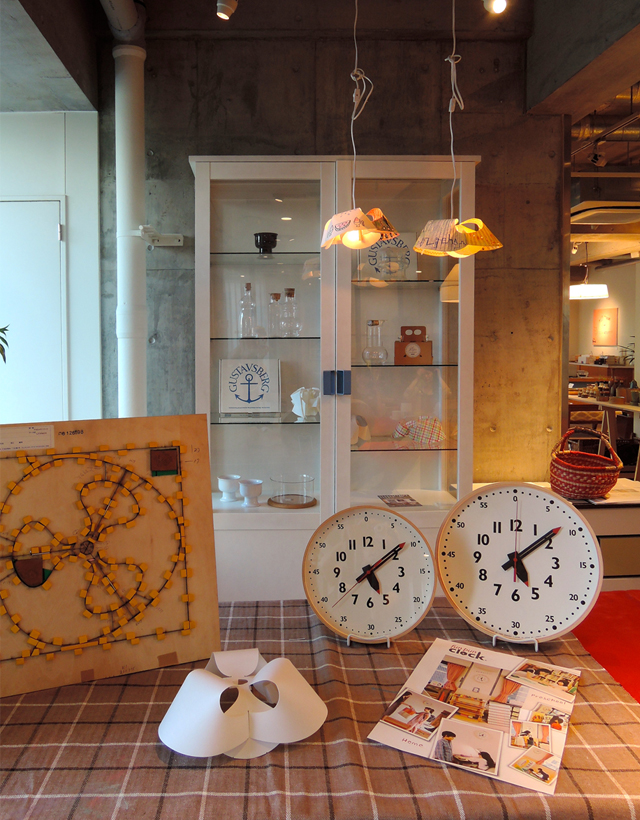 The start of us developing the “fun pun clock” goes back to the time when I was desperately looking for a “kid-friendly clock” that I could use at my interior workshop.
The start of us developing the “fun pun clock” goes back to the time when I was desperately looking for a “kid-friendly clock” that I could use at my interior workshop.
There was a serious reason why I was looking for such a clock. I’d had an experience of carelessly making a mother cry when her child was participating in my interior workshop. At my usual workshop for children held during the summer vacation, the mother was scolding her child because he was absorbed in doing his work. I asked her, “Do you always encourage him to learn a sense of time management?” On reflection, I was very casual in asking her this “bossy” question, and I was then really surprised when she started crying.
I was unsure as to exactly why she was crying, but I sympathized with her to a degree.
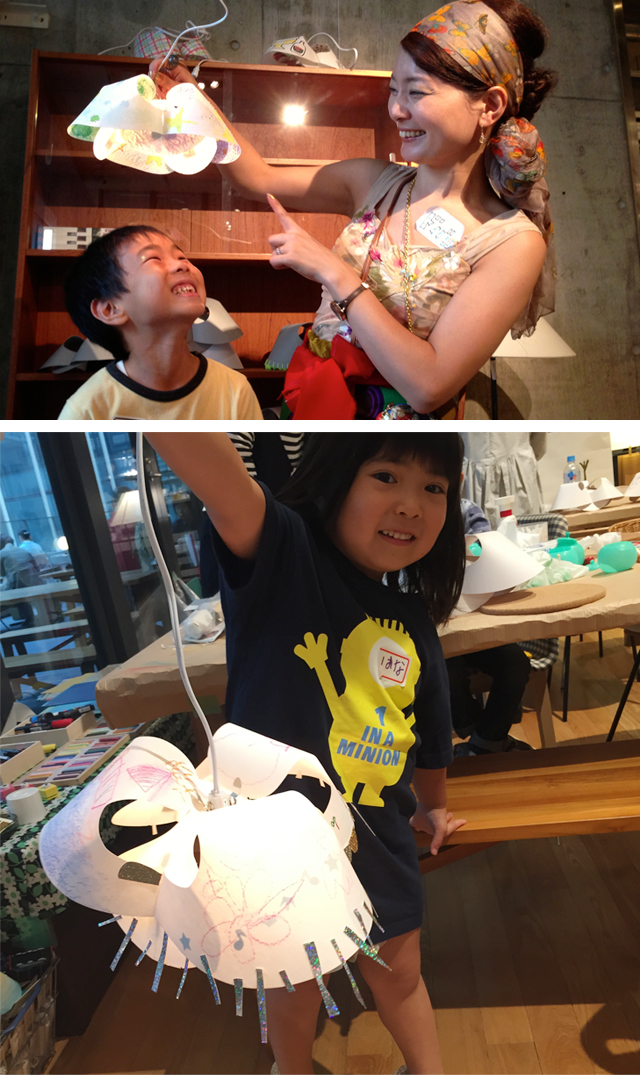 In my interior workshop, participants assemble paper shades into night lights.
In my interior workshop, participants assemble paper shades into night lights.
A pattern, the idea for which I had when I was a stay-at-home mom and played Origami with my daughter all day long, is painted and cut out by each participant. Your own original pattern is then turned into a three-dimensional night light with the addition of a light kit. My wish is for the lights to give children that wonderful moment in their daily lives when they turn the light out by themselves when they go to bed at night.
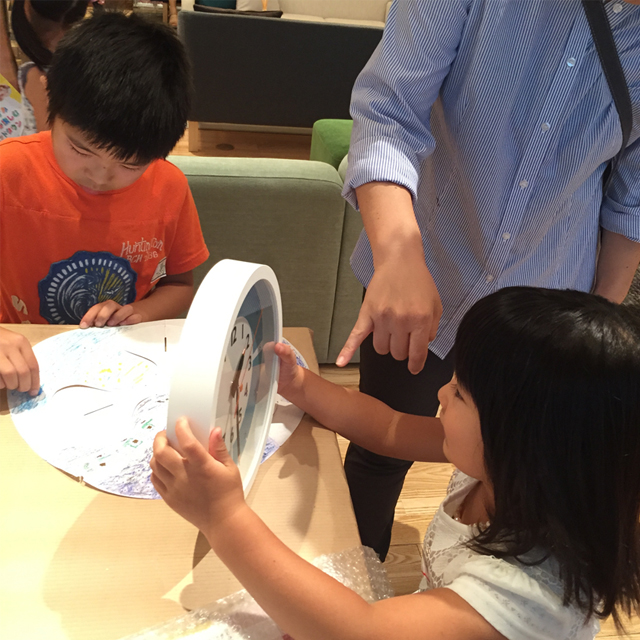 At the beginning of the workshop, I explain that it takes around 20 mitutes for small children to assemble the night light. An accompanying guardian then says to their children, “When the long hand of the clock reaches ‘8,’ let’s finish the painting and start assembling it.” Some guardians urge their children to start assembling when the long hand reaches “4” (20 minutes) , while they are still working.
At the beginning of the workshop, I explain that it takes around 20 mitutes for small children to assemble the night light. An accompanying guardian then says to their children, “When the long hand of the clock reaches ‘8,’ let’s finish the painting and start assembling it.” Some guardians urge their children to start assembling when the long hand reaches “4” (20 minutes) , while they are still working.
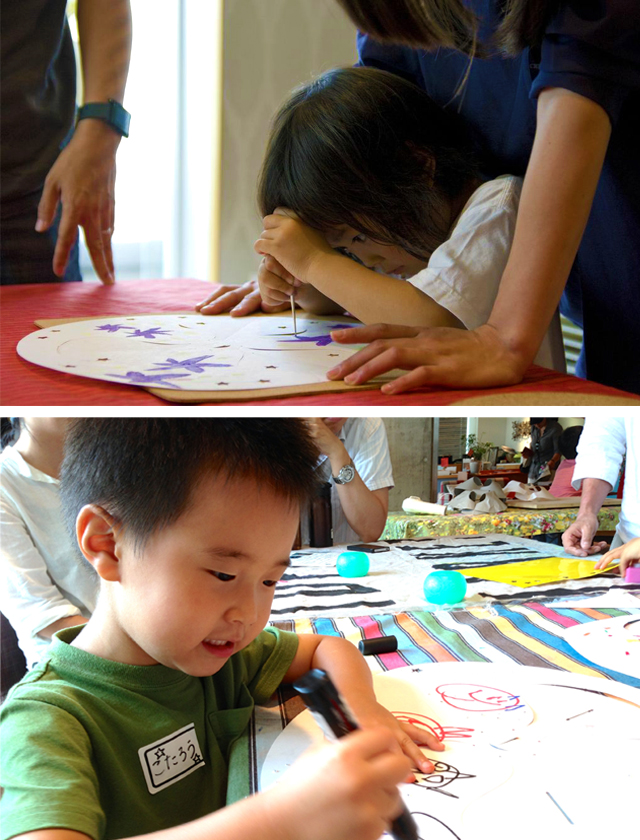 But children who are absorbed in their work will almost always lose track of time. It is time to start assembling a clock once they are able to make shapes out of their images or they have decided they have “finished” their work after scrawling images and it has reached a fixed level. When creating something, it might be meaningless to relate the length of “time” that children need for their work to the “time” on the clock. Meanwhile, it is important, to a certain degree, that those supervising grasp the time because they need to consider getting home from the workshop and preparing dinner.
But children who are absorbed in their work will almost always lose track of time. It is time to start assembling a clock once they are able to make shapes out of their images or they have decided they have “finished” their work after scrawling images and it has reached a fixed level. When creating something, it might be meaningless to relate the length of “time” that children need for their work to the “time” on the clock. Meanwhile, it is important, to a certain degree, that those supervising grasp the time because they need to consider getting home from the workshop and preparing dinner.
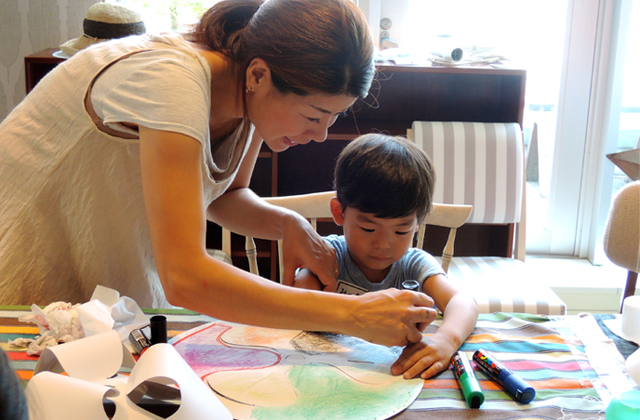 What do you think will happen? When the minute hand reaches “7,” the site becomes noisy with whispering like, “After a little, the minute hand is reaching ‘8’…”. After the hand goes over “12,” the atmosphere becomes “the end of the world.”
What do you think will happen? When the minute hand reaches “7,” the site becomes noisy with whispering like, “After a little, the minute hand is reaching ‘8’…”. After the hand goes over “12,” the atmosphere becomes “the end of the world.”
I really can understand the feeling.
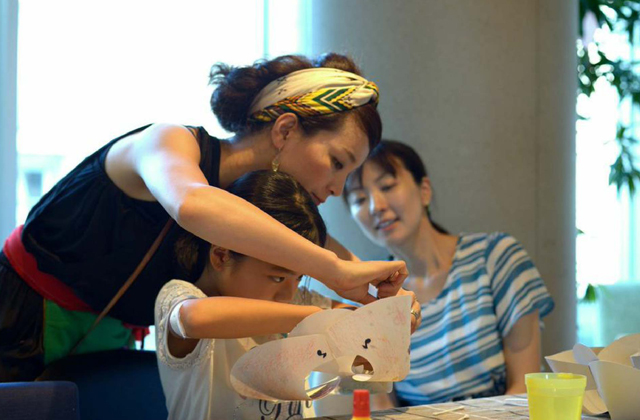 Our children still haven’t finished their work or moved their hands thinking of something…it annoys us, doesn’t it?
Our children still haven’t finished their work or moved their hands thinking of something…it annoys us, doesn’t it?
At the time, they start to grizzle or do a poo in their diaper. It really makes us want to cry. At a time like this, if someone asks us a reasonable thing like it’s an admonition, “ Do you usually communicate with your children to connect with activities and time?”, we are full of shame.
・・・
I was to blame because I failed to provide a clock that was also easy for the children to read.
I then started to look for a clock that would relate the 12-numeral system to the 60-numeral system without thinking very seriously.
To be continued…

Yoko Dobashi
Yoko Dobashi spent five years working at Idee co. Ltd. (1997-2002). She was involved in the development of standard furniture and in the launch of the “SPUTNIK” brand, which was introduced in London, Milan, and New York. Since 2012 she has hosted the “Design life with kids interior workshop.” She is active independently as a freelance designer and interior writer, working in collaboration with various companies and media. In 2017 she provided design to TAKATA Lemnos and the “fun pun clock” won the GOOD DESIGN AWARD. Her article “Interior for a 156-cm-tall” is serialized at Precious.jp.
http://yokodobashi.com/




